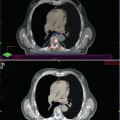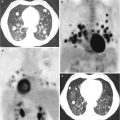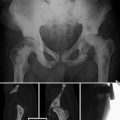Rationale and definition of MDT
Promotion of MDT considered as an ethical priority, given the benefits of MDT and the imperative to provide all patients with the best possible care
Fostering MDT considered as imperative to ensuring appropriate clinical decisions
Multidisciplinary clinical practice guidelines considered as deserving special attention
Clinical leadership and firm commitment by health-care providers considered as prerequisites to change management and to sustain team structures
Given the dynamic nature of cancer, networks for knowledge and expertise considered essential
MDT work considered crucial for future challenges like survivorship
MDT considered as an alliance of all medical and health-care professionals
Care objectives
Initiation of MDT monitoring immediately after cancer diagnosis
Need for MDT consensus and patient consent on evidence-based treatment plan
Decision-making process consistent with evidence-based clinical practice guidelines
Need for tailoring guidelines to the type of tumor and the conditions of the patient during MDT meeting discussions
Need for informing the patient on treatment decisions and taking his preferences into account
Need for offering assess to counseling for psychosocial support and other supportive issues
Follow-up plan to be integrated with a joint survivorship care plan elaborated by the MDT and shared with the patient
Follow-up aimed to monitor possible relapse and posttreatment needs including rehabilitation
In selected cases need for integration between MDT and palliative care team to ensure continuity of care
Need for involving primary care physicians in the discussion of their patients and in the follow-up management
MDT organization
Need for monitoring all new and recurrent cancer patients
Need for presenting every case at a tumor board for discussion or assessing adherence of clinical recommendations to evidence and guidelines
Specialists involved in the MDT formally assigned and ensured protected time to attend multidisciplinary activities
MDT care protocols to be updated every 2 years
MDT proactive in promoting educational experiences and quality improvement actions
Designation of MDT coordinator to ensure efficient discussion within the tumor board, secure professionals’ attendance, prepare cases to be discussed, involve specialists necessary for the discussion, and implement decisions taken by the MDT
Leading position considered as temporary, with clear rules for nomination process and rotation system
Case management to be provided by an expert nurse or qualified staff member who could be contact person for the patients and the team
Clinical information and assessment
Need for a prospective database with clinical indicators
Information available for evaluation of outcomes
Decisions taken and rationale applied considered as important information to be recorded
Patients’ rights and empowerment
Need for fluid communication with patients and shared decision-making
Need for discussing treatment and care preferences with patients before making clinical decisions
Possibility for patients to have second opinions
Identification of a responsible physician at every stage of the care process
Identification of a case manager responsible for communicating with patients
Improvement of patient experience considered as key element in the quality of care
Improvement of patients’ level of information considered as necessary: on the MDT organization, on the care process, on treatments and treatment-related side effects, on community resources
Patients and volunteer organizations considered as welcome in cancer centers
Policy support
Need for involving European and national scientific societies and patient associations
21.2 Experiences in the Literature
Besides the paper by EPAAC working group, several articles highlighted the benefits of managing cancer patients with a multiprofessional approach by a team of trained, skilled, and qualified physicians and health professionals, thus able to deliver the multimodal treatment requested by several oncologic malignancies and ensure quality and continuity of care [4–9]. The interdisciplinary and multiprofessional management of cancer patients reduces the time from diagnosis to completion of necessary pretreatment consultations and to treatment, the number of visits before initiation of care, the duplication of the procedures, and the fragmentation of care; allows the timely detection of disease relapse and treatment-induced complications; applies a personalized medicine, paying particular attention to all the dimensions of the patients, the physical as well as the emotional, social, and spiritual/existential ones; enables to improve care in terms of consistency (i.e., evidenced-base clinical decisions, objective treatment proposals without specialty-driven bias) and continuity (i.e., coordination of therapies); permits to improve communication among health professionals and to share responsibility on complex cases; favors inclusion of patients in trials; offers educational opportunities to the team members to acquire a multidisciplinary knowledge of the disease; and increases patient satisfaction, compliance to treatment, and clinical outcome (Table 21.2) [4–9].
Table 21.2
Benefits of multidisciplinary and multiprofessional management of cancer patients
Benefits |
|---|
Less time from diagnosis to treatment |
Fewer consultations before initiation of care |
More continuity of care |
Timely detection of disease relapse and treatment-induced complications |
Application of personalized medicine |
Attention to all the dimensions of the patients |
Increased consistency in the care: evidence-based clinical decisions, objective treatment proposals without specialty-driven bias |
Better communication among health professionals |
Shared responsibility on complex cases |
Increase in the number of patients included in trials |
Educational opportunities to the team members to acquire a multidisciplinary knowledge of the disease |
Increase in patient satisfaction, compliance to treatment, and clinical outcome |
As a result, the involvement of different specialists and health professionals in the care of cancer patients can be considered as the best way to make the shift from operating in silos to team-based care and from individual to shared responsibility. Essential prerequisites for an effective multidisciplinary team working are orchestration and coordination of the activities, and this translates into a few requirements necessary to reach these major goals and to overcome barriers to effective team functioning [6, 8]:
- 1.
The multidisciplinary team needs a leader.
- 2.
Philosophy, dynamics, roles, objectives, and actions need to be made clear and shared within the team.
- 3.
Administrative and cleric support needs to be granted to facilitate organization and coordination of multidisciplinary activities.
- 4.
Health professionals participating in the multidisciplinary team need protected contractual time to attend the multidisciplinary activities.
- 5.
Institutional support should be granted in terms of both funding and organizational issues (meeting room, IT facilities, etc.).
- 6.
The multidisciplinary team needs to learn to work in team, trust each other, and respect the differences in approach.
It is also very important to consider the natural history of the disease to identify the specialists and health professionals who have to be involved in the multidisciplinary management of cancer patients in every phase as well as the multidisciplinary activities which need to be implemented in a particular state of disease. The choice as on whom to involve, and when, enables to optimize resources, efforts, and costs and, at the same time, offer patients the best approach to the disease. For patients with advanced cancers, for example, the multidisciplinary team should also involve the palliative care team in an early stage, as underlined by the EPAAC working group [3], thus implementing the concept of simultaneous care. Indeed innovative treatment modalities and new drugs for many cancers may prolong patients’ life, but it is beyond any doubt that, being often affected by an active and symptomatic disease, patients may develop mental and psychosocial distress, functional decline, spiritual issues, and financial problems. It is crucial to identify the needs of this vulnerable population and offer simultaneous care in an early phase of the overall management regimen [10, 11].
21.3 Simultaneous and Palliative Care
Taking care of cancer patients and their quality of life means to offer the best therapeutic options as well as to detect physical, functional, psychological, social, spiritual/existential, and also financial needs [12]. To do that it is necessary to involve different health professionals such as supportive and palliative care experts, physiotherapists, nutritionists, psychologists, social workers, and spiritual counselors. The concept of simultaneous care was developed to address patients’ broad array of needs, to focus on the importance of delivering care as well as monitoring and managing pain and symptoms, to improve patient care experience and quality of life, to reduce the use and costs of medical services, to help family caregivers manage the complexity of care, and to facilitate the shift from treatment to palliative care and to end-of-life care [13–17].
According to the World Health Organization (WHO), palliative care is “an approach that improves the quality of life of patients and their families through the prevention and relief of suffering by means of early identification and impeccable assessment and treatment of pain and other problems, physical, psychosocial, and spiritual” [18]. As a result, palliative care should be integrated with standard oncology care, be part of the multidisciplinary team, and thus be offered to all patients with advanced cancer in an early stage. As recommended by the American Society of Clinical Oncology (ASCO) Provisional Clinical Opinion [19] and the European Society of Medical Oncology (ESMO) [20], standard oncology and specialized palliative care should join efforts and work multidisciplinarily early in the disease trajectory for patients with advanced cancer and/or important symptom burden. Data from the literature seem to stress the positive impact of this multiprofessional alliance on patients’ quality of life and cancer experience, on standardization of procedures, in some cases even on better survival rates, on reduced hospitalization and emergency department visits, and on costs [14, 17, 21–33].
At the same time, numerous barriers hinder the integration process, making this indeed one of the biggest challenges in oncology. Different examples are reported in the literature among which are (1) education-related barriers, (2) implementation-related barriers, and (3) policy-related barriers (Table 21.3) [34].
Table 21.3
Barriers to the integration of palliative care in the oncologic care
Education-related barriers | Lack of education and training for medical residents |
Perception of palliative care as pertinent to the end-of-life care by health providers | |
Perception of palliative care as pertinent to the end-of-life care by the public | |
Implementation-related barriers | Inadequate work force |
Difficulty in identifying patients who might benefit from palliative care | |
Need for cultural change in the perception of palliative care | |
Policy-related barriers | Fragmented structures |
Need for greater funding | |
Lack of incentives for palliative care personnel |
Generally speaking, as smartly observed by Berry et al. [35], “palliative care has a branding problem,” and this would explain its underuse in spite of the unquestionable benefits. Palliative care is still perceived by patients, families, and also some physicians as pertaining to the end-of-life issues. Some organizations considered adopting a new name and switched to “supportive care” in some cases. The analysis of 4.701 consecutive patients pointed out an increase in the number of referrals and an anticipation of the referral itself after the name change [36–38]. However, the connection of advanced cancer palliative care with the end of life, in other words with death, is not a semantic one but a fact that should not be denied with nominalistic makeups rather accepted both in the medical community and in society based on an empathic, compassionate, and honest therapeutic ground [39]. The universally accepted terminology of palliative care approach, palliative care speciality, and palliative care services [40] is informing most of the health-care policies in the world and gives also important clinical opportunities. In fact, early referral to palliative care outpatient clinics improved communication and patients’ understanding of goals of care and reduced aggressive end-of-life treatments [17, 41]. It is likely that this improvement in communication can also result in increasing patients’ autonomy and access to better advanced care directives.
For these reasons, there is a crucial need also for better education about the breadth and scope of palliative care, which must not be confined in end-of-life management and hospice and must embrace relief of suffering, improvement of quality of life, and assistance in dealing with the disease-induced burdens [11]. Education should start at the earliest stage of training and be aimed to address the goals of palliative care as well as improve the physicians’ competence [11].
21.4 Organization of Palliative Care Services
Hui and Brera [42] described the most common conceptual models of palliative care with the aim of supporting stakeholders in understanding the rationale for integration. The review addressed the time-based model (i.e., integration is activated on chronological criterion), the provider-based (or palli-centric) model (i.e., primary, secondary, and tertiary care), the issue-based (or onco-centric) model with focus on the solo practice, the congress and the integrated care declinations, and the system (or patient-centric) model (in which referral is automatically triggered by particular clinical events). No matter the model applied, it is fundamental to establish criteria for referral timing and team roles, thus offering patients a continuous process of care without gaps or fragmentation. It is evident that prerequisite to integrated palliative care is to pay particular attention to organization and coordination of care provision, with the aims of merging the different separate components of a system to achieve common goals, optimizing the use of resources and improving the quality of the services offered [43].
Key points for the integration of palliative care in the continuum of cancer care can be summarized as follows:
Outpatient access to palliative care is fundamental.
The interdisciplinary nature of palliative care favors the addressing of multidimensional care needs.
Particular attention has to be paid to the type of patients to be referred and referral time.
Communication between specialists is mandatory: this could be facilitated by the participation of a member of the palliative care team in tumor boards or, alternatively, by the participation of a medical oncologist in the palliative care team meetings. It must be said, though, that combined tumor boards require effort on both sides and it must be difficult to apply on a routine basis. It is for this reason that protocols ruling referral should be also promoted [44]; several efforts in this direction are already under development [45].
Organization and coordination of care provision become absolute “must have” in oncology where we are assisting at the increase in the number of new diagnoses and, at least for certain malignancies, better survival rates [46]. As a result, more and more patients are treated and monitored with clinics and exams for a very long time. If the multidisciplinary management is recognized as the best approach possible to cancer patients, it becomes crucial to carefully evaluate resources and workload to optimize the process of care. To do so, it is important to avoid generalization and take into consideration the specifics of the different oncologic diseases. The ingredients to activate a multidisciplinary approach to breast cancer [47–50], to colorectal cancer [51, 52], to lung cancer [52, 53], to gynecologic cancer [53], and to prostate cancer [54, 55] substantially differ in terms of health professionals involved, diagnostic and therapeutic paths to be followed, and multidisciplinary activities to be implemented.
21.5 The Case of Prostate Cancer
Prostate cancer, which is the most frequently diagnosed tumor in men with 417,000 new cases every year in Europe [56], is among the malignancies that most benefit from a multidisciplinary and multiprofessional management. The disease is indeed a spectrum of differently behaving forms, from small, clinically insignificant, asymptomatic, indolent tumors to aggressive, rapidly progressing, potentially lethal cancers [57]. The number of diagnoses increased dramatically after the introduction of PSA as a screening tool in the early 1990s. This enabled to detect more and more very low, low, and intermediate cancers [58–60]. With the term of overdiagnosis, the scientific community refers to the phenomenon of detection of a large proportion of indolent prostate cancers that will never evolve and cause symptoms in one’s life [61]. Not evolving, these forms do not need to be treated and could be monitored with active surveillance.
Considering that most prostate cancers, although showing very favorable features, undergo treatment, the scientific community refers with “overtreatment” to the phenomenon of treating with curative intent (i.e., with radical prostatectomy, external radiotherapy, or brachytherapy) also those tumors with an indolent behavior that could be spared therapy and therapy-induced side effects all together [62, 63].
The multiple patterns of indolence versus aggressiveness of prostate cancer reflect a difference in the prognosis as well as in the treatment and observational modalities by which the disease can be approached. Depending on the state of the disease, several therapeutic options are actually available: open, laparoscopic, or robot-assisted laparoscopic prostatectomy; conformal, intensity-modulated, or image-guided conventionally fractionated, hypofractionated, or extremely hypofractionated external radiotherapy; low-dose-rate or high-dose-rate brachytherapy; hormonal therapy alone or combined with radical therapies; chemotherapy; radionuclide therapy; observational strategies (active surveillance and watchful waiting); or experimental therapies, e.g., cryotherapy and high-intensity-focused ultrasound [64–73].
Low- and very low-risk tumors with very favorable characteristics can be monitored with active surveillance in alternative to being radically treated, with the possibility of switching to therapy if the initial disease features change in time. On the contrary, prostate cancer with less favorable characteristics, which tend to be more aggressive, needs to be treated often by a multimodal approach with surgery and/or radiotherapy and/or hormonal therapy. In addition, this group of patients has to be tightly followed up after treatment to record treatment-induced side effects as well as disease relapse which would mean the need for administering additional treatment.
Prostate cancer treatments may cause adverse effects that impact on patients’ quality of life. Each therapeutic option has a unique profile of adverse effects, with variations depending on the single patient, the disease characteristics, the quality of the procedure performed, and the specialists’ expertise. The scenario is complicated by the rapidly evolving highly sophisticated technologies and the launch of promising drugs in different disease settings (i.e., the castration-resistant prostate cancer). A new generation of hormonal agents is being accepted as more effective and less toxic compared with previous molecules. Furthermore, recently discovered chemotherapeutic drugs and radionuclides are showing good results in impacting on survival [65, 68, 70, 72, 73].
Stay updated, free articles. Join our Telegram channel

Full access? Get Clinical Tree







